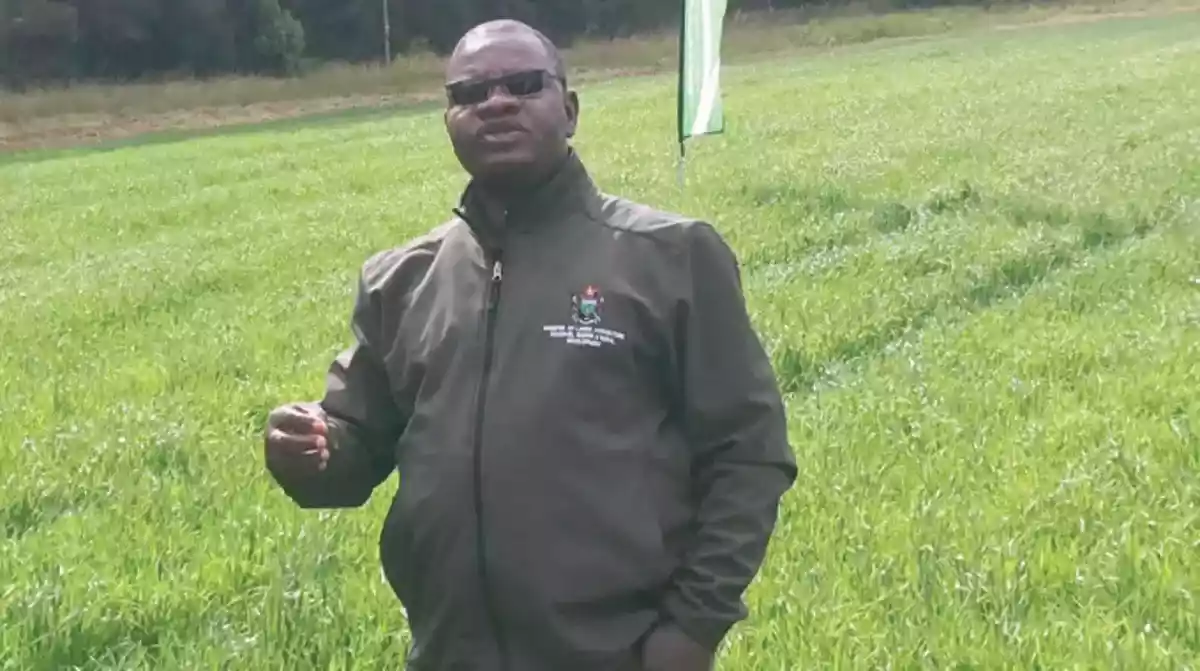
RAINFED agriculture is facing challenges on two fronts of accelerating climate change and lack of technological innovation to boost horticultural production.
Many African countries are food insecure because of not harnessing the power of technology to enable the continent to achieve Agenda 2063’s key transformational outcomes, the Africa we want, instead of the one we all need.
Although many countries are pinning their hopes on Vision 2030, it is being fast overtaken by events, time and space.
Agenda 2063 points out that competitiveness and economic transaction will require sustained investment in new technologies and innovation, particularly in agriculture and energy as aligned to the Sustainable Development Goals.
It is within the context of the increase in the impacts of climate change-induced droughts that horticultural production needs to be upscaled from mere subsistence to commercialised and mechanised levels to improve value chains.
One critical ingredient is the availability of water so that it can be efficient and conserved at the same time. Indeed, water is key in the horticultural production chain, hence it needs to be harvested, stored and conserved at household, community and national levels.
Besides that, we need improved disease and pest management technologies, like precision farming which cuts costs and time, post-harvest technologies as many losses are incurred after harvesting since horticultural produce is perishable.
The country has vast potential for horticultural production, therefore, it needs transformation in handling post-harvest losses through on-site or nearby canning or processing plant technologies.
- Why are we still pitting jobs against public health?
- Jurgen Klopp: Liverpool manager signs new two-year contract extension at Anfield until 2026
- COP27: Zimbabwe’s opportunity to shine
- Shot in the arm for Chiredzi, Bikita communities
Keep Reading
In this regard, value-addition technologies like production, on-site or nearby processing plants are a must. There is also need for digitised marketing of produce to get fair returns by being accurate on prices and market trends, including data management techniques, documentation and repositories.
Smallholder horticultural farmers need to be aware of and probe new and emerging technologies or embrace new emerging technologies to abide by regional and global trends. This enables horticulture to be a source and choice of employment, creating high value job opportunities and improving the country’s livelihood options.
Research and innovation need to be improved in the horticultural sector to avoid importing products that can be easily produced within. Research and innovation do not exist in isolation, they cannot be wished away, but should be funded if we are to be sincere with ourselves as a country.
The Unesco Science Report of 2019 cites that Africa contributes at least 2,6% of the global research output. In this view, our research capacities as a continent continue to lag, that is why our knowledge base is controlled, prescribed and captured.
Smallholder horticultural farmers need access to affordable technologies to help them to have improved yields, while reducing post-harvest losses.
They also need affordable cooling technologies to reduce post-harvest losses, enabling them to make a living, feed their families and improve their livelihoods.
The envisaged cooling systems can be success stories in Zimbabwe, benefiting a substantial number of smallholder horticultural farmers in the process.
Local companies into refrigeration and mechanisation can also take advantage of this initiative to empower local horticultural farmers by using cooling technologies or recommending them to other suppliers. The reason is to enhance cold chain management and provide horticultural positive footprints.
Good and accessible roads are a major requirement since the horticultural products need safe and swift movement since they are perishables. Delays in transporting fresh produce from source to the markets need to be overcome or properly managed to avoid unnecessary losses. Unscrupulous middlepersons need to be removed from the horticultural chain management because they place the farmer in difficult situations.
Testing soils and monitoring soil moisture conditions in agriculture is key to enhanced horticultural production. Horticultural irrigation requires proper timing although not providing information about the amount of irrigation water required. Use of drones provides highly accurate/precise aerial insights, for smallholder horticultural farmers to make better decisions, increasing productivity while lowering costs at the same time.
Smallholder horticultural farmers need training for pest and disease identification and control, including weed control, soil health and increased crop yields.
Renewable energy in the form of solar power is key in driving simple and cheaper horticultural smart farming. Drip irrigation is key in enhancing water conservation especially in the context of drought and climate change.
Key pillars should not be missing in the horticultural value chain, these are the placements of women and youths, continuous education, training and awareness, including decolonising farming and technology transfer.
There is a strong interlinkage between climate change, poverty and food insecurity, which of course needs to be deconstructed but only through adopting the above interventions.
Problems arise when climate action may not progress fast enough to build the necessary adaptive capacity to climate-induced impacts of drought. While climate-induced droughts are pushing hunger and poverty to the front, poor countries continue to lack coping mechanisms with horticulture coming in as a key enabler.
Soil conditioning, improving structure of soil, promoting water retention and stabilising soil surfaces as horticulture need adequate water resources to harvest.
These will enable crops to withstand drought conditions while reducing the need for frequent irrigation.
There are combinations of factors involved in realising the horticultural value chain from proper planning, availability of water, pest free soils, technology innovation and utilisation, research and innovation, analysing market forces, good roads and movement of perishables, including canning or processing plants.
This also includes continuous education, training and awareness as knowledge is key and transformative.
Peter Makwanya is a climate change communicator. He writes in his personal capacity and he can be contacted on: [email protected]









